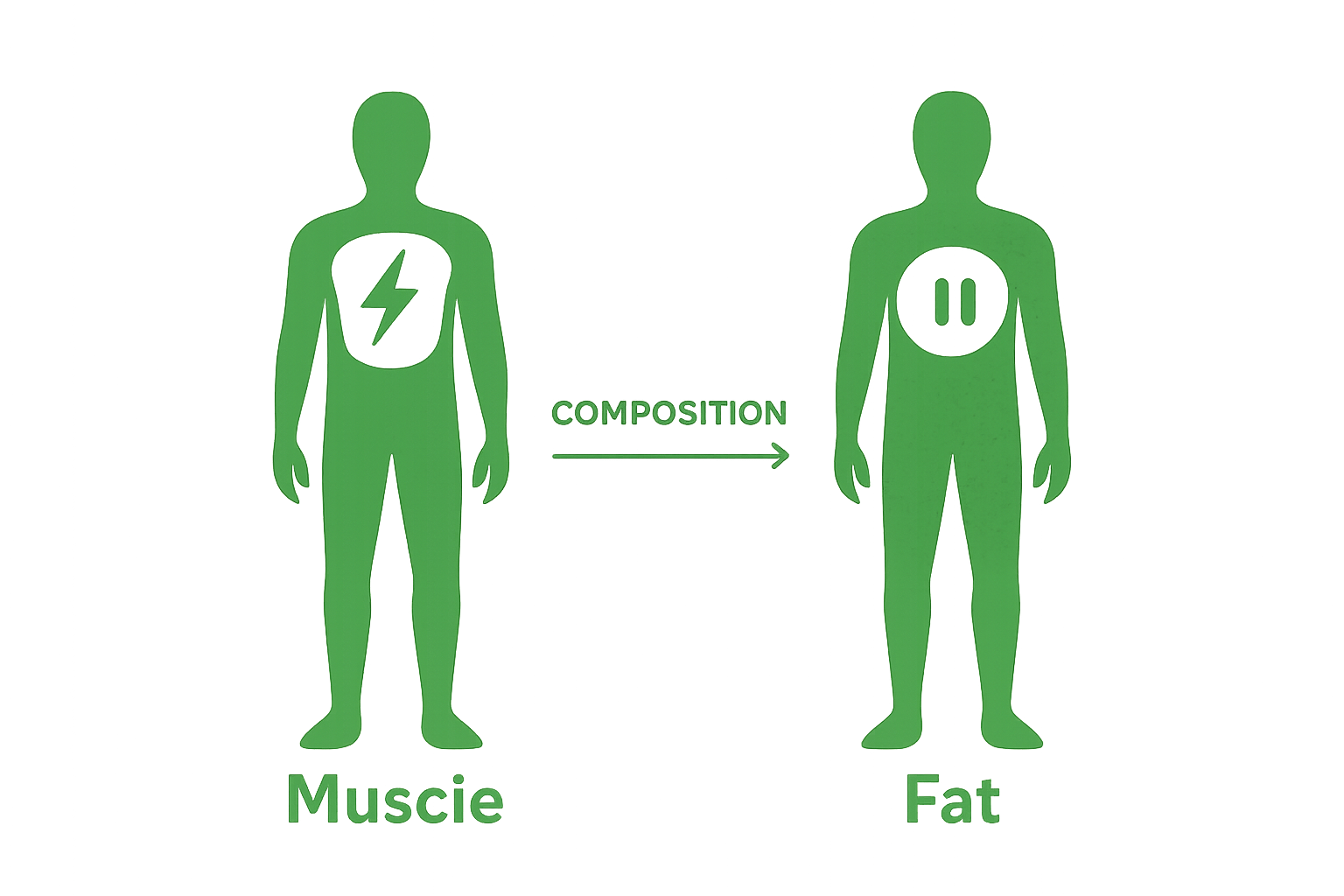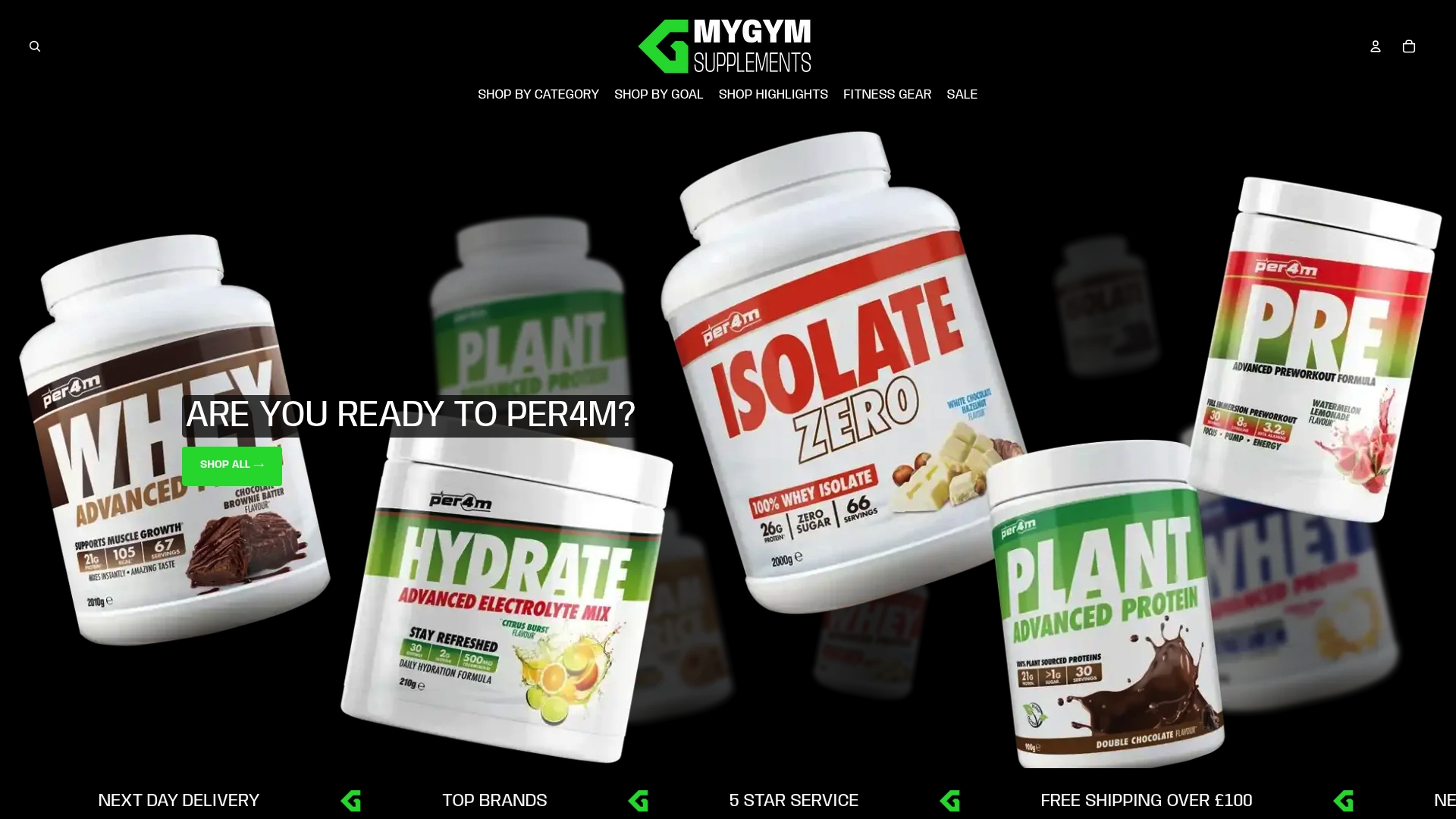Lean muscle shapes daily movement and underpins everything from athletic strength to healthy ageing. Most people think looking toned is the main benefit. Yet research shows that lean muscle burns more calories at rest and improves metabolism, preventing health risks as you age. The real advantage is how this tissue quietly upgrades your entire body, far beyond what the mirror can show.
Table of Contents
- Defining Lean Muscle: Composition And Characteristics
- The Importance Of Lean Muscle In Fitness And Health
- How Lean Muscle Works: Physiology And Function
- Factors Influencing Lean Muscle Growth And Maintenance
Quick Summary
| Takeaway | Explanation |
|---|---|
| Lean muscle enhances metabolism. | More lean muscle increases resting metabolic rate, aiding in weight management and energy expenditure. |
| Resistance training stimulates muscle growth. | Engaging in resistance exercises promotes muscle protein synthesis, crucial for enhancing muscle mass and strength. |
| Nutrition is key for muscle maintenance. | High-quality protein and essential nutrients support muscle growth and mitigate age-related muscle loss. |
| Lean muscle supports daily activities. | Strong muscles improve balance, prevent injuries, and enhance overall physical performance in everyday life. |
| Progressive overload is essential. | Systematically increasing the intensity of workouts maximises muscle development and adaptation over time. |
Defining Lean Muscle: Composition and Characteristics
Lean muscle represents a critical component of human physiology, representing metabolically active tissue composed primarily of protein that supports fundamental bodily functions. Unlike fat tissue, lean muscle directly contributes to strength, metabolism, and overall physical performance.
Below is a summary table outlining the main characteristics of lean muscle as described in this section to help clarify its role in human physiology.
| Characteristic | Description |
|---|---|
| Composition | Primarily protein and water |
| Metabolic Activity | Highly metabolically active, influences energy expenditure and overall metabolism |
| Force Generation | Capable of generating force and enabling movement |
| Responsiveness | Reacts and adapts to physical training and nutritional interventions |
| Structural Proteins | Comprised of myofibrils (actin and myosin) within muscle cells |

Muscle Cellular Structure
At its core, lean muscle consists of specialized protein filaments called myofibrils arranged within muscle cells. These intricate structures enable muscle contraction and movement through complex biochemical interactions. Research from the University of Birmingham demonstrates that resistance training can stimulate muscle protein synthesis, highlighting the dynamic nature of lean muscle tissue.
Key characteristics of lean muscle include:
- Primarily composed of protein and water
- Metabolically active tissue
- Capable of generating force and movement
- Responds to physical training and nutritional interventions
Functional Significance
Lean muscle plays a pivotal role in multiple physiological processes beyond mere movement. It serves as a crucial metabolic organ that influences energy expenditure, insulin sensitivity, and overall body composition. For individuals interested in understanding more about how muscles develop and function, read our comprehensive guide on muscle protein synthesis.
The quantity and quality of lean muscle mass directly impact an individual’s resting metabolic rate, meaning more lean muscle translates to higher caloric expenditure even during periods of rest. This metabolic advantage makes lean muscle development a key strategy for weight management and overall health optimization.
The Importance of Lean Muscle in Fitness and Health
Lean muscle transcends aesthetic considerations, representing a fundamental pillar of holistic health and physiological performance. Its significance extends far beyond muscular appearance, encompassing critical metabolic, functional, and preventative health dimensions.
Metabolic and Health Benefits
The presence of lean muscle mass directly correlates with enhanced metabolic efficiency and disease prevention. Research commissioned by Public Health England underscores that muscle-strengthening activities provide substantial health advantages, including improved energy levels and reduced risk of age-related decline.
Key metabolic benefits of maintaining lean muscle include:
- Increased resting metabolic rate
- Enhanced insulin sensitivity
- More efficient glucose metabolism
- Improved cardiovascular health
- Better hormonal regulation
Performance and Functional Capacity
Lean muscle serves as the primary engine driving physical performance and functional independence. As individuals age, muscle mass naturally declines, making deliberate muscle maintenance crucial. Learn more about muscle preservation strategies in our muscle memory guide.
Beyond athletic performance, lean muscle supports everyday activities like walking, lifting, balance maintenance, and injury prevention. Strong muscles protect joints, improve posture, and create a robust physical foundation that enables individuals to maintain mobility and quality of life across different age groups.
Nutritional support and consistent resistance training remain the most effective strategies for developing and preserving lean muscle, transforming it from a mere physical attribute to a comprehensive health optimization tool.
How Lean Muscle Works: Physiology and Function
Lean muscle operates through a sophisticated system of cellular interactions, biochemical processes, and adaptive mechanisms that enable movement, energy production, and metabolic regulation. Understanding these intricate physiological processes reveals the complexity behind muscle function and development.
Muscle Contraction Mechanism
At the microscopic level, muscle contraction occurs through the sliding filament mechanism, where actin and myosin protein filaments interact to generate mechanical force. When a nerve signal triggers muscle activation, calcium ions facilitate the interaction between these protein structures, causing them to slide past each other and produce muscular movement.
Key components of muscle contraction include:
- Nerve impulse transmission
- Calcium ion release
- Protein filament interaction
- Energy consumption via ATP
- Precise cellular signalling
Metabolic Adaptation and Growth
Research from the University of Bristol highlights the dynamic nature of muscle tissue, demonstrating how muscles continuously adapt to physical stress. This process, known as hypertrophy, involves protein synthesis and cellular remodelling in response to resistance training and nutritional interventions. For athletes and fitness enthusiasts looking to optimise their nutritional support, check out our guide on top vitamins for bodybuilders.
Muscle growth and maintenance depend on a delicate balance between protein synthesis and breakdown, regulated by hormonal signals, nutritional intake, and physical activity. This ongoing process ensures muscles remain responsive, efficient, and capable of meeting changing physiological demands.
Factors Influencing Lean Muscle Growth and Maintenance
Lean muscle development is a complex interplay of multiple physiological, nutritional, and lifestyle factors that collectively determine an individual’s muscle mass, strength, and overall metabolic health. Understanding these interconnected elements provides crucial insights into effective muscle management strategies.
To clarify the various factors discussed in muscle growth and maintenance, the table below organises key nutritional and training components essential for supporting lean muscle.
| Factor | Role in Muscle Growth and Maintenance |
|---|---|
| High-quality Protein | Stimulates muscle protein synthesis, supports repair and growth |
| Essential Amino Acids | Provides building blocks necessary for new muscle tissue |
| Adequate Caloric Intake | Ensures sufficient energy for muscle development |
| Micronutrients & Hydration | Supports cellular function, muscle contraction, and recovery |
| Resistance Training | Triggers adaptive muscle hypertrophy and strength gains |
| Progressive Overload | Maximises muscle adaptation by increasing training intensity |
| Recovery & Sleep | Facilitates muscle repair, hormonal regulation, and long-term growth |
Nutritional Foundations
Nutrition plays a pivotal role in muscle growth and maintenance, with protein intake emerging as a critical determinant. Research from the UK government emphasizes the importance of regular muscle-strengthening activities and appropriate nutritional support to prevent age-related muscle loss.
Key nutritional factors influencing lean muscle include:

- High-quality protein consumption
- Essential amino acid balance
- Adequate caloric intake
- Micronutrient availability
- Hydration status
Training and Physical Stimulation
Resistance training remains the most potent stimulus for muscle growth, triggering complex cellular adaptation mechanisms. Progressive overload, which involves systematically increasing workout intensity, represents a fundamental principle in muscle development. Explore our comprehensive guide on vitamins that support bodybuilding performance to understand how nutritional support can enhance training outcomes.
Beyond resistance training, other critical factors such as recovery, sleep quality, and hormonal balance significantly influence muscle maintenance. Testosterone, growth hormone, and insulin-like growth factor play essential roles in muscle protein synthesis and tissue repair, highlighting the intricate biochemical landscape governing muscle physiology.
Build Your Best Lean Muscle with the Right Nutrition
Struggling to maintain or increase lean muscle despite your best efforts in the gym? You are not alone. Many active people face the same challenge, often because their bodies lack the nutrients needed for muscle protein synthesis, effective recovery, or lasting results. True lean muscle growth is more than just exercise—it demands targeted nutritional support with proteins, amino acids, vitamins, and other essentials discussed in this article.

Ready to give your muscles the fuel they need to thrive? Explore MyGymSupplements.shop and discover a wide range of supplements designed to support muscle gain, recovery, and ongoing health. Whether you want high-quality protein, amino acids for optimal muscle contraction, or performance recovery solutions, we can help you turn scientific knowledge into real muscle results. Do not wait—shop now to accelerate your fitness journey and lay the foundation for stronger, leaner muscle today.
Frequently Asked Questions
What is lean muscle?
Lean muscle refers to metabolically active tissue primarily composed of protein that supports bodily functions and enhances strength, metabolism, and physical performance.
How does lean muscle contribute to metabolism?
Lean muscle increases the resting metabolic rate, meaning that having more lean muscle can lead to higher caloric expenditure, even at rest, making it essential for weight management and overall health optimization.
What are the benefits of maintaining lean muscle as we age?
Maintaining lean muscle contributes to improved metabolic efficiency, enhanced insulin sensitivity, better cardiovascular health, and greater functional independence, which are crucial for preventing age-related decline.
How can I support the growth and maintenance of lean muscle?
To support lean muscle development, focus on a balanced diet rich in high-quality proteins, engage in regular resistance training, ensure proper hydration, and prioritise recovery, sleep, and hormonal balance.
Recommended
- What is Muscle Protein Synthesis? Understanding Its Importance – MyGymSupplements
- Understanding What is Muscle Memory and Its Importance – MyGymSupplements
- What is Muscle Breakdown? Understanding the Basics and Impacts – MyGymSupplements
- 7 Top Vitamins for Bodybuilders to Boost Performance – MyGymSupplements



0 comments